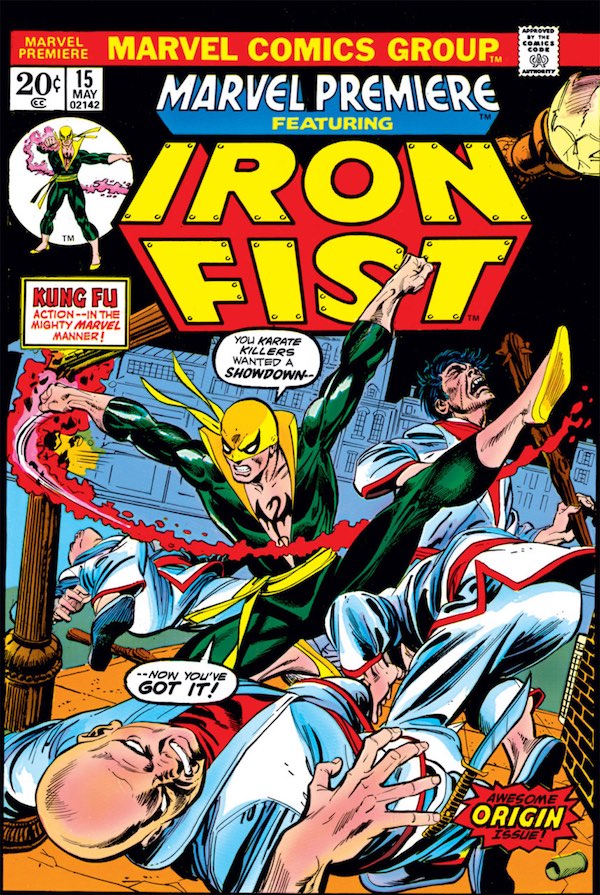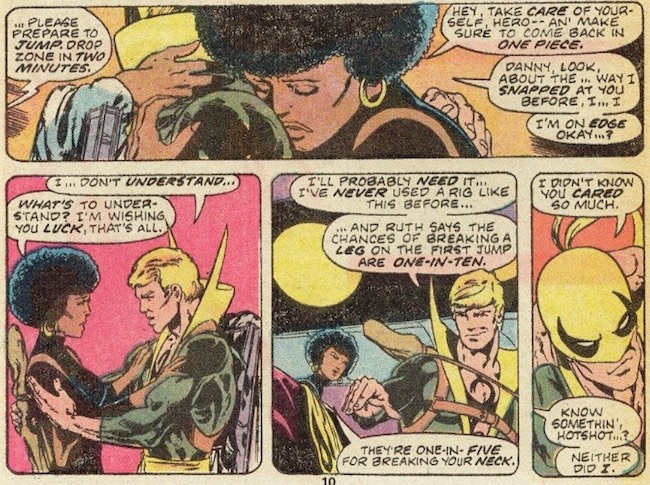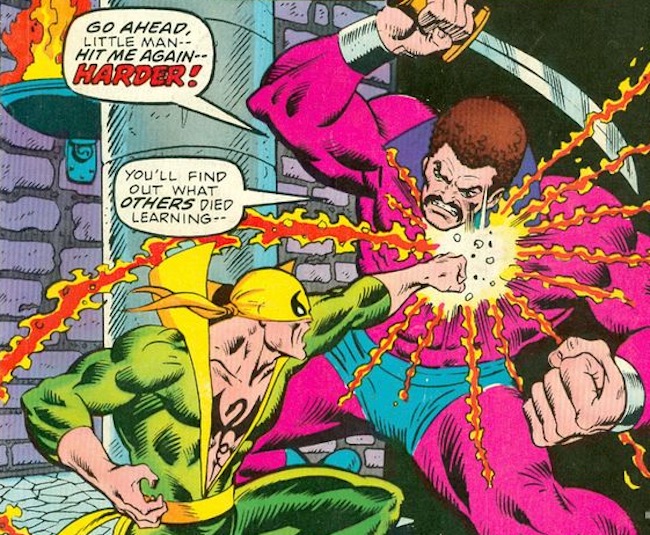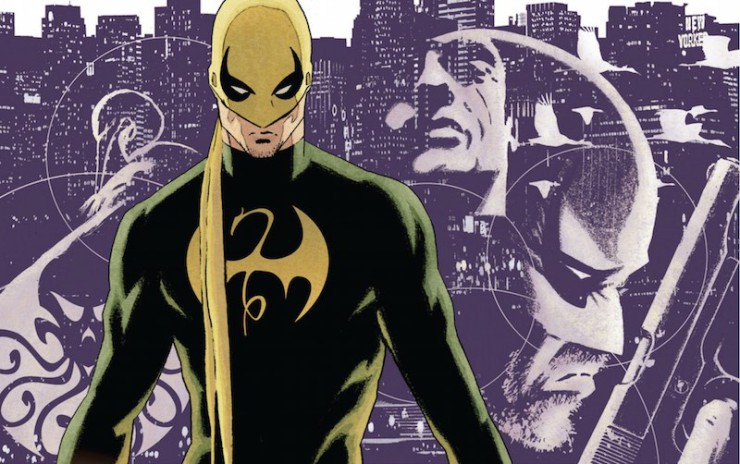In 1966, Masutatsu Oyama, the founder of Kyokushin—an Okinawan karate style that still exists and thrives today—sent one of his best students and teachers, Tadashi Nakamura, to New York City to bring karate to the United States. Nakamura was but one of many people who came from Asia to the United States to bring martial arts to a country that was growing ever-more curious about it. I mention him in particular because there’s a direct line from Oyama sending Nakamura to America and my own study of the martial arts. In 1976, Nakamura formed his own karate style, Seido, and one of his best students and teachers—William Oliver—formed his own in 2001, Kenshikai, and that’s the discipline that I study today.
The same year that Nakamura traveled to New York City to open a dojo here, a young man named Bruce Lee co-starred in a TV show called The Green Hornet. While the show only lasted a season, Lee’s impact was tremendous, and he quickly rose to prominence as an action star. Lee pioneered his own martial art, Jeet Kune Do, and he soon became immensely popular both in acting circles and martial arts circles. His tragic death in 1973 only served to enhance his legend. And it was in part because of that legend that Iron Fist was born.
The dojo Nakamura opened in Brooklyn in 1966 was one of hundreds that sprung up like dandelions all over the country over the next decade and more. Martial arts movies were gaining traction in popular culture, particularly in the “grindhouse” market.
Both DC and Marvel were more than happy to jump on that bandwagon. In 1973, Marvel acquired the rights to Sax Rohmer’s Fu Manchu, and created the new character of Shang-Chi, Master of Kung Fu, a previously unknown son of Fu Manchu who fought for good, unlike his father. In 1974, DC countered with Richard Dragon, Kung Fu Fighter, originally created by Denny O’Neil and Jim Berry in the novel Dragon’s Fists, later adapted into the DC universe by O’Neil.
And between those two, Roy Thomas and Gil Kane wrote a story for Marvel Premiere #15 that gave us Danny Rand, a.k.a. Iron Fist.

Rand’s story borrowed liberally from pulp sources. Like the Shadow and Dr. Strange, he was a white guy who found himself in the “mysterious Orient,” and learned their ways. In Rand’s case, when he was ten, his father Wendell took him, his wife Heather, and his business partner Harold Meachum to the Himalayas to try to find the lost city of K’un L’un, where he had lived as a boy. Meachum killed Wendell, and was driven off by Heather, and then Heather was killed by wolves. Little Danny was taken in by the denizens of K’un L’un, which only intersects with our world once a decade.
Over the course of ten years, Danny Rand trained to be a martial artist, eventually taking the test that all the finest students in K’un L’un take: to battle Shou Lao the Undying, a mighty dragon whose heart was removed from his body and placed in a brazier, keeping the dragon alive mystically via a dragon-shaped scar in the creature’s chest.
Rand hit upon the notion of blocking the scar with his own body, which killed the dragon—and also left a permanent dragon-shaped scar on his own chest. He then thrust his hands into the brazier, and now the dragon-heart’s power flows through him. He is capable of channeling his chi—his life force, basically—into his fist, making it like unto a thing of iron.
Hence: Iron Fist.
After a decade—and after losing his two closest friends to the Hylthri, the plant people who are sworn enemies of K’un L’un—Rand leaves K’un L’un and returns home to New York City. He wants revenge on Harold Meachum for killing his father (and inadvertently leading to his mother’s death). Meanwhile, Davos, a.k.a. the Steel Serpent—son of the man who trained Rand, and who covets the iron fist—also travels to New York to kill Rand and claim the iron fist.
Along the way, Rand makes several friends, including former policewoman Misty Knight and swordswoman Colleen Wing. Later, he and Luke Cage are thrown together, and they become partners in Heroes for Hire—and best friends. In addition, Rand starts a relationship with Knight, one of the first (and few) interracial romances in mainstream comics.

After his debut in Marvel Premiere, where he was written by Thomas, Tony Isabella, Len Wein, and Doug Moench, Rand got his own comic book. It only lasted fifteen issues, though it has an impressive pedigree, as it was written by Chris Claremont with art by John Byrne, the creative team behind the golden age of X-Men comics. Claremont and Byrne resolved the Steel Serpent storyline (which had been left hanging by the cancellation) in Marvel Team-Up, then the pair of them took over Power Man and brought Iron Fist in as his partner.
Power Man and Iron Fist lasted for seventy-five more issues before it was cancelled in 1986, having been written by Claremont, Ed Hannigan, Jo Duffy, Denny O’Neil, Kurt Busiek, Steven Grant, Isabella, and Jim Owsley (these days known as Christopher Priest). In the final issue, Iron Fist was killed. He was later retconned to be alive (the person killed in Power Man and Iron Fist #125 was a Hylthri disguised as Rand, which never really made any kind of sense, but it brought the character back, so whatever) in Namor the Sub-Mariner (written and drawn by Byrne), and has continued to appear regularly in the Marvel Universe since then. He starred in his own title again, The Immortal Iron Fist, which lasted almost twice as long as his last title (27 issues), written by Ed Brubaker, Matt Fraction, and Dwayne Swierczynski, and he’s had bunches of miniseries. He’s also appeared in a number of team books, having been a member of the large Heroes for Hire group in that short-lived title, and also being part of the New Avengers underground team led by Captain America during the first Civil War storyline. In addition, Rand spent some time posing as Daredevil.
Currently, Cage and Rand are back together in a new Power Man and Iron Fist comic book, and there’s also a new Iron Fist comic out this month written by Ed Brisson.
Eventually, it’s revealed that Rand is the latest in a long line of Iron Fists throughout the decades, and he meets some of them.
Very few martial arts heroes have thrived since the kung-fu-craze glory days of the 1970s. Shang-Chi fell into obscurity, only recently revived from it, Richard Dragon remains mainly a background character, and other martial arts heroes like the Sons of the Tiger have never really taken off.

But Iron Fist has endured. Not as a major player, necessarily, but a very strong supporting one. At least partly it’s because he has a certain fish-out-of-water quality. He’s someone who never really fit into K’un L’un, but when he returned to New York, he never entirely fit in there, either. He’s a rich white American guy but he embraces a very ascetic Asian philosophy.
Plus, he has a visually interesting super-power, complete with massive strength and a glowy hand.
This article was originally published in March 2017. Keith has since covered the somewhat disappointing first season of Netflix’s Iron Fist, along with the character’s subsequent appearances in both The Defenders and season two of Luke Cage. Next week, he’ll be covering season two of Iron Fist.
Top image: Immortal Iron Fist #6 (2006), cover art by David Aja
Keith R.A. DeCandido‘s next novel will be the third book in his “Tales of Asgard” trilogy of prose adaptations of Marvel superheroes, Marvel’s Warriors Three: Godhood’s End, which follows the first two books in the trilogy, Marvel’s Thor: Dueling with Giants and Marvel’s Sif: Even Dragons Have Their Endings. He has been writing for Tor.com since 2011, including detailed rewatches of shows in the Star Trek, Batman, and Stargate franchises, and pieces on Redshirts, Doctor Who, Luke Cage, and the Star Trek movies. He started training in Kenshikai Karate in 2004, and is now a second-degree black belt and teaches several afterschool karate classes at local schools, as well as a kids fighting class at the dojo where he trains. Feel free to read his blog, follow him on Facebook or Twitter, or just comment here and tell him what an idiot he is.










